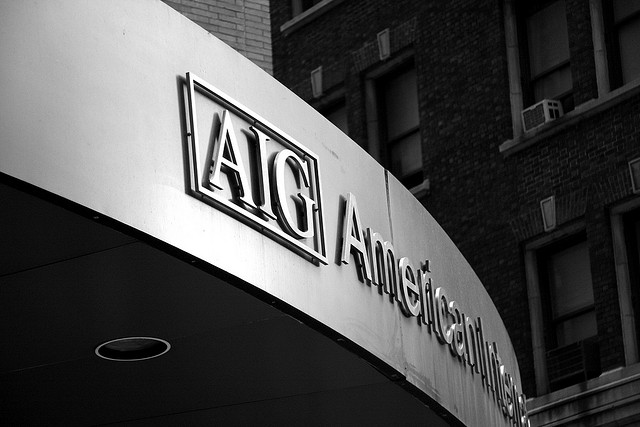By: Chris Neill
The Fifth Amendment to the Constitution, among other things, prevents the federal government from taking private property for public use without just compensation. This is known as the “takings clause.” In its most basic construction, this means if the government is going to take your family farm to build a highway, your property will be appraised and you will be compensated accordingly.
The takings are not always so cut and dry, though, and the Supreme Court has worked throughout the nation’s history to flesh out the nuances. In the 1946 case United States v. Causby, the Supreme Court ruled that even though a farmer’s land was not literally taken from him, his commercial prospects were severely impacted by a nearby airfield and he was owed just compensation.
In 1978, the Court set the upper boundary on what the government could do without triggering a takings clause claim in Penn Central Transport Co. v. City of New York. New York law designated the Grand Central Terminal, which was owned by Penn Central, as a historic landmark. This designation, which the Court upheld, prevented Penn Central from potentially developing a multistory office complex above the station. The ruling limited Penn Central’s commercial prospects with the facility, but this time the court ruled that it didn’t constitute a taking.
Unfortunately, that was not the end of the story. In 2005, the Supreme Court handed down one of its most controversial decisions to date: Kelo v. City of New London. In the case, a tract of land in Connecticut was to be taken from its private property owners and turned into a massive, multi-million dollar research facility for pharmaceutical giant Pfizer. The court allowed the taking, reasoning that the tax revenue from the facility was a public good for local residents.
The lesson to be learned from this body of case law is that the line on what constitutes a taking by the government unclear and what constitutes public good is even less clear. It gets tricky when what is being taken is not literal property such as real estate. What if the government is just affecting the use of your land? What if the government thinks it has a more productive use for your land? Or what if the government were to take control of, say, 79 percent of your company’s equity? It would not be the most absurd idea to find its way into the American legal system.
Unless that “taking” was actually the government stepping in and saving your company – which happens to be the nation’s largest insurance company – from going bankrupt and shattering an already struggling economy.
Earlier in January, American International Group (AIG)’s board of directors had to consider whether or not it would join a lawsuit mounted by ex-CEO Hank Greenberg against the U.S. government for what he believes was an unconstitutional taking.
However, the lawsuit came right in the midst of AIG’s massive PR campaign to inform the public that the company was back on its feet and that they actually returned a profit to the taxpayers. So much for Thank You, America?
In 2008, the American financial system was falling apart right before everyone’s eyes. Major investment banks had bought into the profitability of complex collateralized debt obligations. To mitigate the associated risk, they then bought a type of insurance on the securities known as a credit default swap. When the original loans began to default, the securities tanked, and the insurers (namely AIG) were left to make payments to the holders of the credit default swaps.
AIG, in turn, did not have the liquidity necessary to make these kinds of payouts and faced imminent bankruptcy. This is when the federal government stepped in. Claiming the “systemic risk” that AIG held and the damage that its bankruptcy would cause the U.S. economy, the government bought out a majority stake in AIG for $182.3 billion.
By 2012, the government sold out all its shares of AIG, recovering its $182.3 billion in full, and then some. American taxpayers ended up making a $22.7 billion profit on its “investment” (bailout) of AIG.
Mr. Greenberg now leads a group of AIG shareholders called Starr International. It is Mr. Greenberg, through Starr, who purports to sue the federal government for an unconstitutional taking.
Last week, he went to AIG’s board and presented them with the opportunity to join the lawsuit on behalf of all its shareholders not represented by Starr. The board eventually produced a statement in which they formally disassociated themselves from Starr’s lawsuit and forbade Starr from pursuing any claims in AIG’s name.
Despite their ultimate disapproval, the very idea of the lawsuit drew severe criticism on AIG’s behalf. “Thank You, America” seems to carry little weight when AIG is contemplating saying it from across the courtroom. Some critics, still bitter about AIG’s role in the financial crisis, expect them to accept the bailout with a sense of humble gratitude.
So does Mr. Greenberg have one of the most twisted senses of humor in the United States? Surely there must be some underlying reason behind this lawsuit. In fact, Mr. Greenberg may have a legitimate claim with AIG shareholders’ best interests at heart. Mr. Greenberg alleges in the lawsuit that the bailout of AIG was a “covert, inequitable backdoor bailout for Goldman Sachs and AIG’s other bank counterparties.” Where those counterparties were able to benefit from the bailout, Mr. Greenberg claims that AIG’s shareholders may in fact have fared better with a simple loan from the government that didn’t require the forfeiture of any ownership. That is not easy to say for sure, but given the chance to litigate, the judicial system could certainly reach an agreement on that issue.
More importantly, the judicial system may have the opportunity to provide a little clarity in the wave of confusion left by the 2005 Kelo decision. Kelo held that the economic benefit of a population did constitute “public use,” but how far could the government go? The financial crisis put the government in a lot of yet-to-be-defined situations that forced it to react to rapidly and without precedent.
While the government is usually granted a lot of leeway in times of national emergency, it is critical to look back and make sure that its actions were constitutionally sound once the crisis has passed. Was it OK for the government to step on the property rights of the shareholders for the greater good of trying to protect the economy? What about all of the inconsistencies in the government’s reaction to the financial crisis? AIG was bailed out but Lehman Brothers was left to go bankrupt. Was this type of bailout appropriate in the long term or did it create a moral hazard problem? Strategist Barry Ritholtz thinks the deal actually “preserved and even exacerbated the problem of ‘Too Big to Fail’ financial institutions.”
Financially, the AIG bailout seems to have paid off, but did the government overstep its boundaries? Regardless of the lawsuit’s outcome, it will contribute to a more definitive constitutional framework through which the federal government can react to similar (hopefully less severe) situations it might face in the future. So take criticisms of Mr. Greenberg’s lawsuit with a grain of salt, because it’s not simply a matter of biting the hand. It’s a matter of creating precedent, a matter of eliminating overreach, ambiguity, and uncertainty for future administrations.

